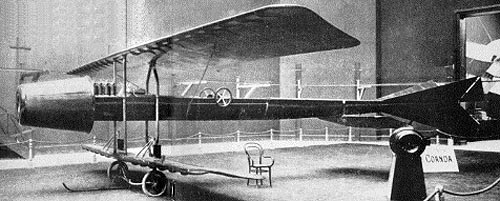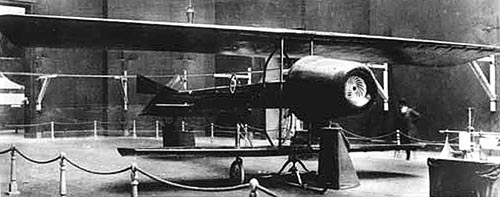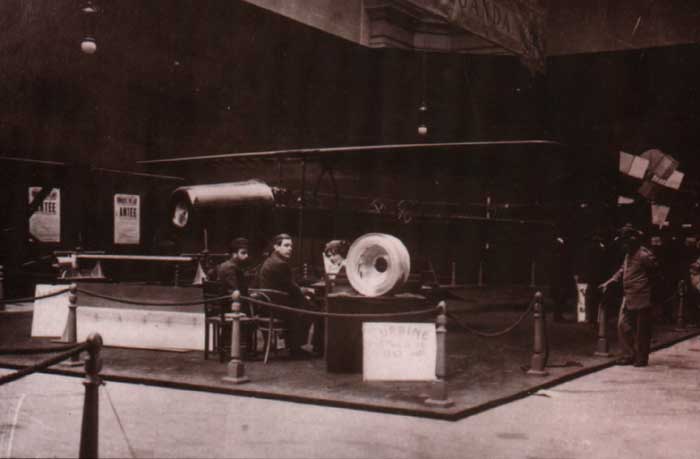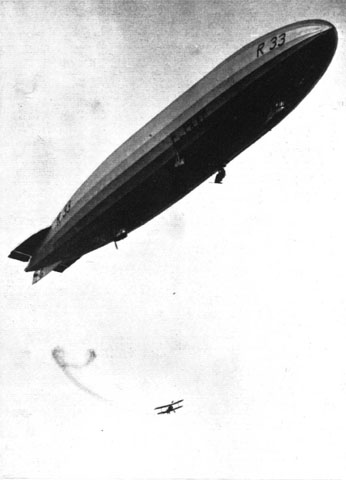
This is a real oddity, and I still can’t wrap my head around it. In 1910, a Romanian named Henri Coandă built and flew the world’s first jet aircraft. Yes, 1910! That’s two whole decades before Frank Whittle. And less than a decade after the Wright brothers!
Caveats: when I say “jet”, I mean “thermojet” — it was powered by an internal combustion engine, not a gas turbine as with a turbojet, which is what most people are talking about when they say “jet”. But a thermojet is still a jet: it works on the reactive principle, by combusting compressed air and fuel and exhausting the gas at high velocity, which imparts momentum to the aircraft in the opposite (ie forward) direction.
And when I say “flew”, I mean “crashed and burned”. After exhibiting his aeroplane at a Paris aeronautical exhibition (where the accompanying photographs were presumably taken), Coandă was testing the engine on the ground at Issy-les-Moulineaux on 16 December 1910. It turned out to be more powerful than he expected, and the aircraft took off briefly — how briefly is not clear — and then crashed. Coandă was not a pilot and was lucky to escape with only minor injuries, especially given the flames streaming from the engine; his aeroplane caught fire upon impact.

But the jet engine was not the only innovative feature of this remarkable aeroplane. Consider the wings: there were only one-and-a-half (ie, a sesquiplane rather than a biplane); they were partly of metal construction; and there were what sound like slats on the leading edge of the upper wing — which also stored the fuel! This was all too much, apparently; although he went on to a successful career designing aircraft (for Bristol, among others), Coandă couldn’t get anyone to take interest in his novel design.
Was this a missed opportunity? Probably not, I’d say. Assuming that the thermojet propulsion did make the Coandă-1910 potentially faster than propeller-driven aircraft (opinions seem to vary — some argue that a thermojet would actually be less efficient), then this was a solution to a problem that nobody was yet aware of. Speed and maneuverability were not highly prized by the military at this time — stability was, for ease of observation (and maybe bombing) of ground forces. Also, airframes were still very flimsy — wood and wire — and were not up to the stresses that powerful thermojets would have imposed on them. Both of these circumstances had changed by the 1930s. Perhaps most importantly, the possibilities of “conventional” aircraft had obviously not yet been exhausted. There was no need to take risks with such an unfamiliar technology.
But, I still have this vision of swarms of Coandă-1917 jet fighters screaming into the sky over London to rip the heart out of the incoming waves of Gotha bombers …
Image sources: Centre for Telecommunications and Information Engineering, Monash University; Forţele Aeriene Române.
![]() This work is licensed under a Creative Commons Attribution-NonCommercial-NoDerivatives 4.0 International License.
Permissions beyond the scope of this license may be available at http://airminded.org/copyright/.
This work is licensed under a Creative Commons Attribution-NonCommercial-NoDerivatives 4.0 International License.
Permissions beyond the scope of this license may be available at http://airminded.org/copyright/.







Pingback: ??? ????? – Dragonflies case site